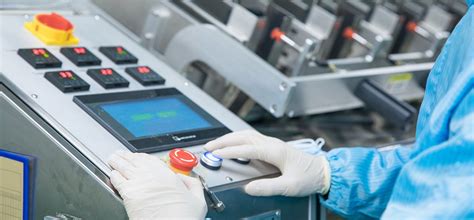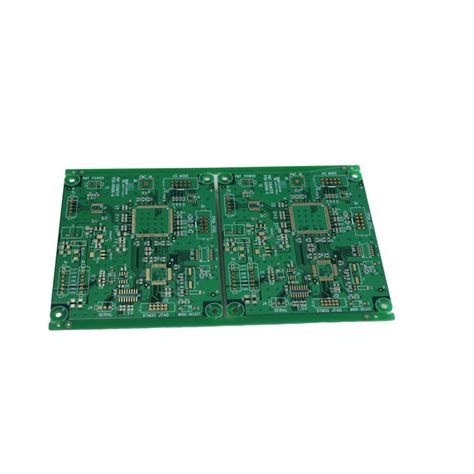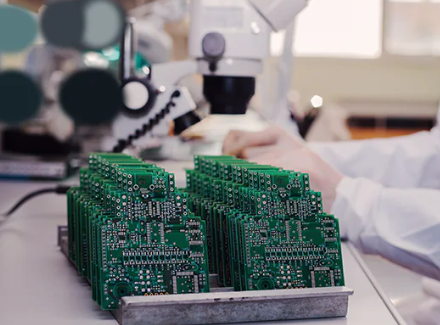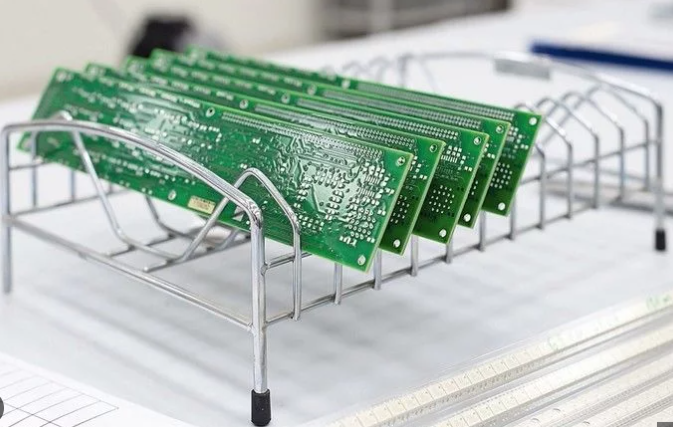The Future of Innovation: A Deep Dive into Circuit Manufacturing
Key Takeaways
Understanding the landscape of PCB manufacturing is essential for anyone involved in electronics today. The shift towards more advanced technologies is revolutionizing how you view the PCB manufacturing business. PCB manufacturing companies are increasingly integrating automation and data-driven solutions, making the process faster and more reliable. This transformation not only reduces PCB manufacturing costs but also enhances the overall efficiency of production lines. As you navigate this evolving industry, consider how emerging technologies like artificial intelligence and machine learning are being utilized to optimize designs and streamline operations. It’s crucial to stay informed about these developments so you can leverage competitive advantages in your own endeavors. Moreover, sustainability has become a key focus; adopting eco-friendly practices in your circuit manufacturing operations can position your business as a leader in innovation, aligning profitability with environmental responsibility. Therefore, keeping abreast of these trends can significantly impact your strategic planning and operational effectiveness in the realm of circuit manufacturing.
The Evolution of Circuit Manufacturing: Past, Present, and Future
The journey of circuit manufacturing has been marked by remarkable change, reflecting broader technological advances and market demands. In the past, pcb manufacturing relied heavily on manual processes, limiting scalability and efficiency. As you navigate through the years, you’ll discover how subsequent innovations paved the way for modern techniques. Today’s pcb manufacturing companies incorporate automation and precision engineering to reduce pcb manufacturing costs, thereby enhancing their competitive edge. In this evolving landscape, you will find that digital solutions and advanced materials are catalysts for transformation, resulting in faster production cycles and higher-quality outcomes. The emergence of innovative processes has not only streamlined workflows but has also made it possible for a broader range of applications, tailored to meet specific market needs. This dynamic shift in pcb manufacturing business practices highlights a commitment to adaptability and resilience in an ever-changing industry, positioning circuit manufacturers as key players in the narrative of technological progress.
Emerging Technologies Transforming Circuit Manufacturing
In the rapidly evolving landscape of pcb manufacturing, emerging technologies are reshaping how pcb manufacturing companies operate and innovate. The advent of advanced materials, such as flexible substrates and high-frequency laminates, is enhancing performance and reliability while reducing overall pcb manufacturing cost. Additionally, the integration of artificial intelligence and machine learning into design processes optimizes workflows, ensuring that your pcb manufacturing business remains competitive in an increasingly demanding market.
Furthermore, advancements in automation play a crucial role in streamlining production lines. Automated inspection systems enhance quality control and minimize human error, resulting in higher precision and faster turnaround times. For those involved in pcb manufacturing, embracing these technologies is not just an option; it’s a necessity to thrive.
“Investing in emerging technologies today will secure your position as a leader in the circuit manufacturing industry tomorrow.”
As you navigate these innovations, remember that your adaptability is key to leveraging new opportunities for growth and efficiency within your business strategy.
Industry Trends Shaping the Future of Circuit Production
As you explore the evolving landscape of circuit manufacturing, several key trends are reshaping the industry. One of the most significant changes is the increasing importance of sustainability. Many pcb manufacturing companies are now prioritizing eco-friendly practices, which not only reduce their environmental footprint but also appeal to consumers who are becoming more conscientious about sustainability. Furthermore, advancements in technology are driving new methods in pcb manufacturing, allowing for lower pcb manufacturing costs through enhanced efficiency and precision.
Another noticeable trend is the rising demand for custom-designed circuits. With the growth of industries such as IoT and electric vehicles, your need for tailored solutions is greater than ever. This shift fosters a thriving pcb manufacturing business, where companies develop specialized products to meet specific market demands.
To illustrate these trends, consider the following table:
| Trend | Explanation | Impact on Industry |
|---|---|---|
| Sustainability | Emphasis on eco-friendly materials and processes | Decreased environmental impact |
| Custom Design | Focus on tailored circuit solutions | Increased specialization and consumer satisfaction |
| Automation | Integration of automated technologies in production | Enhanced efficiency and reduced labor costs |
| Digital Manufacturing | Adoption of digital tools for design and production | Faster iterations and improved accuracy |
As these trends continue to unfold, they will redefine standards in circuit production, setting a new course for what you can expect from future pcb manufacturing endeavors.
The Impact of Sustainability in Circuit Manufacturing Practices
In today’s rapidly evolving landscape, the importance of sustainability in circuit manufacturing cannot be overstated. As you explore the methods and materials used by pcb manufacturing companies, it’s essential to recognize how environmentally conscious practices can significantly reduce pcb manufacturing costs while enhancing product quality. Implementing green technologies in your pcb manufacturing business not only helps minimize waste but also promotes energy efficiency throughout the production process. For instance, adopting renewable energy sources can lead to lower operational expenses and a reduced carbon footprint, paving the way for a more sustainable future. Furthermore, employing advanced materials designed for recyclability plays a pivotal role in refining circuit production practices, encouraging a circular economy. By making conscious choices regarding raw materials and manufacturing processes, you can contribute to a greater legacy of environmental stewardship within the industry. Ultimately, embracing sustainability not only aligns your business with global initiatives but also positions you as a forward-thinking player in the competitive arena of circuit manufacturing.
Key Players in the Circuit Manufacturing Landscape
In the dynamic world of circuit manufacturing, several key players stand out, each contributing to the industry’s evolution and shaping future possibilities. Among these, pcb manufacturing companies are at the forefront of innovation, pushing the boundaries of what is possible in circuit design and production. These companies are not only pivotal in meeting the increasing demand for high-quality circuits but also play a crucial role in managing pcb manufacturing costs. This is especially important as markets demand greater efficiency and sustainability. The pcb manufacturing business relies heavily on collaboration among various stakeholders, including material suppliers, equipment manufacturers, and designers, all of whom work together to create reliable and cutting-edge printed circuit boards (PCBs). As you navigate this landscape, keeping an eye on these influential players will provide insights into industry trends and lead to better strategies for leveraging emerging technologies that enhance productivity and sustainability in your own operations. Understanding their roles can also aid you in better positioning your efforts within this rapidly changing field.
Innovations Driving Efficiency in PCB Design and Production
In the rapidly evolving world of pcb manufacturing, efficiency has become a key driver of success for pcb manufacturing companies. With the integration of advanced technologies, such as automation and artificial intelligence, you can see a significant reduction in pcb manufacturing costs while enhancing overall productivity. For instance, the use of sophisticated design software allows engineers to create more complex circuit layouts with precision, thereby minimizing errors during the production stage. This not only streamlines workflows but also accelerates time-to-market for new products. Additionally, embracing additive manufacturing techniques has led to innovative approaches that enable the creation of more lightweight and efficient circuit boards. As you explore these advancements, consider how they can transform your own pcb manufacturing business and contribute to a more sustainable future. The focus on developing “design for manufacturability” principles can further improve production processes by ensuring designs are optimized from the outset, aligning with both cost-efficiency and sustainability goals. In this era of unprecedented change, staying ahead in the pcb manufacturing sector means continuously adapting to these innovations while maintaining a commitment to quality and efficiency.
The Role of Automation in Modern Circuit Manufacturing
Automation is revolutionizing the way pcb manufacturing is conducted, significantly enhancing efficiency and precision. As you delve into the modern landscape of pcb manufacturing companies, you’ll discover how automated systems streamline processes, reduce human error, and improve overall production standards. These advancements in technology facilitate faster turnaround times while lowering pcb manufacturing costs, allowing companies to respond quicker to market demands. Furthermore, automation plays a critical role in optimizing the pcb manufacturing business, making it possible for firms to achieve higher output without compromising quality. Automated equipment can monitor production in real-time, adjusting parameters to ensure that every circuit board produced meets stringent specifications. This transition not only enhances productivity but also positions manufacturers to remain competitive in an ever-evolving industry landscape. As a participant in this sphere, embracing automation will enable you to leverage these innovations for greater success and sustainability in your operations.
Future Challenges and Opportunities for Circuit Manufacturers
As the landscape of pcb manufacturing continues to evolve, pcb manufacturing companies face both significant challenges and exciting opportunities. Stiff competition and escalating demands for innovation compel manufacturers to embrace advanced technologies, yet these developments come with their own set of complexities. For instance, the rising pcb manufacturing cost due to material shortages and labor dynamics can strain profit margins. However, this also encourages companies to focus on operational efficiency and explore automation, which can notably reduce costs over time. Moreover, the increasing importance of sustainability in manufacturing presents a dual challenge: while transitioning to eco-friendly practices may require upfront investments, it ultimately opens doors to a market that increasingly values sustainability. Keeping pace with these industry trends is essential for your pcb manufacturing business; those who can adapt will not only survive but thrive in an ever-changing environment. The future brims with potential for those willing to innovate while addressing these emerging challenges strategically.
Conclusion
As you reflect on the transformative landscape of circuit manufacturing, it’s clear that the future is ripe with possibilities. The evolution of pcb manufacturing is not just a testament to technological advancement but also an essential component of a sustainable future. By engaging with forward-thinking pcb manufacturing companies, you can better understand how these players are navigating the complexities of today’s market. The pcb manufacturing cost has become a significant factor, influencing decision-making processes as businesses strive to remain competitive while enhancing quality and efficiency. In the bustling arena of the pcb manufacturing business, embracing emerging technologies and sustainable practices will not only set you apart but also contribute positively to global efforts in environmental stewardship. It’s a landscape full of opportunities and challenges, pushing for continuous innovation and adaptation in every phase of production. Your proactive engagement can indeed play a vital role in shaping the direction and impact of future circuit manufacturing practices.
FAQs
What factors influence PCB manufacturing costs?
The pcb manufacturing cost is primarily influenced by materials, design complexity, production volume, and turnaround time. Efficient planning can significantly reduce costs.
How do I choose the right PCB manufacturing company?
Selecting the right pcb manufacturing companies involves assessing their experience, quality certifications, technological capabilities, and customer reviews. You should also consider their ability to meet your specific project requirements.
What technologies are driving advancements in PCB manufacturing?
Emerging technologies such as automation, advanced materials, and 3D printing are revolutionizing the pcb manufacturing business, increasing efficiency and precision in production processes.
How can sustainability be integrated into PCB manufacturing?
Implementing eco-friendly materials and processes can enhance sustainability in pcb manufacturing, minimizing environmental impact while meeting market demands for greener products.
What trends should I watch in the PCB industry?
Stay abreast of trends like miniaturization, increased integration of AI technologies, and a shift towards circular economy practices in order to remain competitive within the pcb manufacturing sector.
For further detailed insights into pcb manufacturing, please click here: AndwinPCB Manufacturing.







